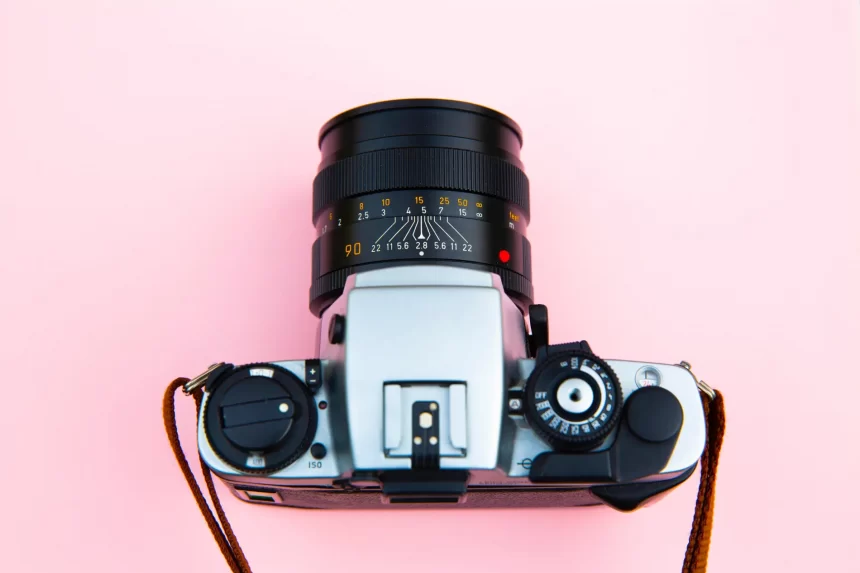What Are Cameras & Camera Modes

Cameras can be complicated pieces of equipment. We use them to create a visual record of the world around us. For example, the camera can be used to take images of the beautiful scenery around us, product photography, etc. Cameras also have various settings called camera modes that allow you to control settings such as exposure, aperture etc.
Many people want to take a quick picture, so the automatic mode is used. However, if you’re going to take a high-quality eCommerce Photography shot of a product, you’ll need to use manual mode and adjust settings.
There are other modes you can use to take great photos, however. As a result, knowing what these modes do and when to use them are essential.
Most important settings
Shutter speed and aperture are the most important settings that a camera can have for manual control. These settings can make a big difference in how an image looks.
Having a faster shutter speed freezes quick-moving objects like a car. A slower shutter speed lets the camera capture light more when dark out or in a low-light room. A wider aperture gives more light but makes the background blurry. A narrower aperture keeps more of the frame in focus.
However, the issue is that the camera needs the correct amount of light to be available for a well-exposed photo. Having too much light will make your photo pure white and too little, and it will be pitch black. Balance aperture and shutter speed to avoid this. To use a wide aperture like f/1.8, you will want to use a faster shutter speed. A narrow aperture would use an f/22 instead, for example.
Shutter speeds & aperture have multiple pairs that produce the same exposure. So, for example, shooting your camera at f/1.8 & 1/125 would be equivalent to shooting with settings of f/11 for 1/8th of a second.
ISO is another important exposure setting on cameras. ISO is a number that indicates sensitivity and tells the photographer (and the camera) how much light is needed for a good photo. A higher ISO (fast films) means more sensitivity. Lower ISOs (slow films) means more light, wider apertures, and slower shutter speeds are needed than faster films.
Digital cameras don’t have the same limitation; however, you can control the sensor’s sensitivity in a way that is similar in practice. If this sounds confusing, the camera’s automatic modes handle all these elements effectively.
What Kind of Control Do You Want?

Every DSLR and mirrorless camera available on the market has an automatic mode and a manual mode available. This setting should be found under a big “A,” symbol but it might have a different name, depending on the camera’s manufacturer. For example, Sony’s automatic mode is called “superior auto,” and Canon named it “scene intelligent auto.” This mode controls absolutely everything about the scene the user wants to shoot. All they need to do is point and shoot.
Manual mode allows users to select every setting and adjust to their liking. Using automatic mode will give you something useable as the camera sorts out the settings for the user. In manual mode, the camera will shoot what you instruct it to shoot based on the settings the user have given the camera.
Some modes allow the user to tell the camera the type of photo you are taking so the camera can pick appropriate settings like portrait and sport modes. These modes are variations of automatic mode.
Other modes lean closer to manual mode and allow control of some settings without needing to change every setting. Finally, right in the middle, there’s program mode. The program mode allows you to choose a range of settings that are provided by the camera. It also lets you tweak how much you stick to those settings.
As a result, automatic mode and its variations are much easier to use. The unnecessary need to understand what settings are needed to take photos with property exposure and look technically decent makes it easier to use. There’s no harm with using your camera like this, despite limiting how much you can express yourself creatively.
Manual mode and the two modes similar to it—aperture priority mode and shutter speed priority mode—provide direct control over the camera. More adjustments are necessary to get correctly exposed photos but allow expressing yourself more creatively through the choices made. Most professional photographers shoot almost exclusively with either manual or aperture priority modes.
The Big Three Camera Mode Settings

To be the most effective with your camera, you’ll need to be able to learn how to control the aperture and shutter speed to take a picture. You’ll need to use manual, aperture priority, or shutter speed priority mode effectively.
Manual mode (M on the camera modes dial)
Manual mode provides the most control. Adjust aperture, shutter speed, and ISO for your shot. The options you select are what your camera will use, regardless of the resulting exposure and how the result will look.
Manual is the camera mode to use when you want to be in control of every setting your camera does. For example, manual mode is essential for shooting at night, such as long exposure photography, or, in a photography studio setting.
Aperture priority (A or Av on the camera’s mode dial)
Aperture priority mode is the most crucial mode on the camera if you want to take control of what you shoot while avoiding the need to tweak the settings for each shot you take. With aperture priority, your camera chooses the shutter speed, and you select the aperture and exposure compensation.
Exposure composition is instrumental as it determines how fast or slow you want the shutter speed compared to your camera’s choice. This allows you to dial in the aperture, take a test photo, and then quickly correct your settings if things aren’t good enough.
In most situations, aperture impacts the look of an image much more than shutter speed. Photographers often use one in a small range of apertures for their photos. However, they are happy with any shutter speed that works for them. There is a vast difference between 1/50th of a second and 1/5,000th of a second, but it will only have a minimal effect on images.
Most professional photographers shoot in aperture priority mode most of the time. This is because aperture priority mode provides the best balance between total control and ease of use. Therefore, aperture priority mode should be your default for everything for when you want to adjust the settings of your shots.
Shutter speed priority (S or Tv on the camera’s mode dial)
Similar to aperture priority, but in shutter speed priority, you choose the shutter speed, and the camera selects the aperture. Professional photographers rarely use this setting, but film cameras regularly use it.
There is no ISO priority mode as manual, aperture priority, and shutter speed priority modes have the option to select a specific ISO or let the camera do it for you.
The Case for Program Camera Modes
While it isn’t necessary to know a lot about optics to take good photos, you need to understand that you can change how a photo looks while having multiple combinations of aperture and shutter speed that provide equivalent exposure.
The program mode allows the camera to choose a shutter speed and an aperture to give a correct exposure. Then, you can select one of the pairs of values that will provide the same exposure. This choice will depend on several factors. For example, whether you want all the elements in your frame to stay in focus (for a landscape shot) or if you want to create more depth with a blurry background (for a portrait).
The camera will do most of the work, but you still determine what the camera does. For example, you can dial in the compensation of your exposure to correct your camera choices that aren’t good for your shot. This is similar to aperture priority and shutter speed priority modes.
A great way to get started with more creative shots is program mode. Program mode helps teach you how aperture & shutter speed works together. This can make it easy to progress to the more advanced techniques and more manual modes in the future.
So many automatic modes, so little time
Automatic mode has many variations, but they do the same thing and leave everything up to your camera to decide.
In the past, this meant cameras played it safe and took generic, well-exposed photos that wouldn’t be too far wrong in most situations. However, this wouldn’t be particularly creative or provide any specific effects. But things have changed for the better as technology improved.
Most cameras have an automatic mode that uses machine learning to detect the sort of photo you’re taking and use more appropriate settings for that photo. For example, it will use a wider aperture if it thinks you’re taking a portrait rather than shooting a landscape photo.
This mode is excellent and useful for beginner photographers or those who don’t fancy learning manual modes. Most entry-level camera models also have other specific automatic modes. You’re likely to find a combination of the following modes in your camera:
- Auto flash off
- Portrait
- Landscape
- Close-up (such as jewellery photography)
- Night portrait
- Sports
- Children
There are other auto options as well, but all auto modes let your camera know what you’re trying to shoot so you can choose the appropriate settings. Selecting the suitable automatic mode for the type of shot you’re taking would be recommended.
Other Camera modes
In addition to the camera modes already mentioned. Manufacturers often have specific modes for their cameras. Nikon, for example, has a “guide mode” on its entry-level cameras that guides you through the process of taking a photo. Canon has a camera mode called “creative auto”. This lets you dial in background blur without needing to adjust exposure settings. These camera modes all work and can be the best tool for the job, but sometimes they’re just there for more selling points for more camera sales.
In short; If you want total control of your camera, use aperture priority or manual mode. If you’re going to focus on shooting and not adjusting settings, go with the most appropriate automatic mode. Finally, go with program mode if you’re somewhere in the middle and want to learn more about manual modes.
To view more of our blogs, visit here.


Leave a Reply